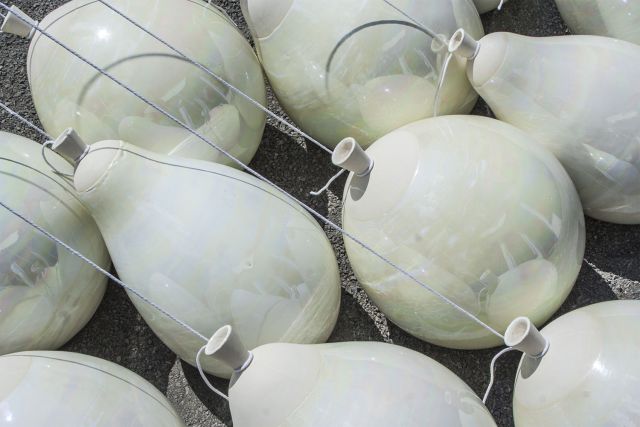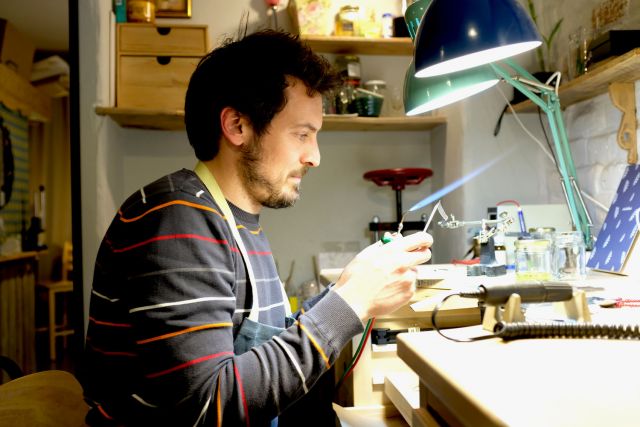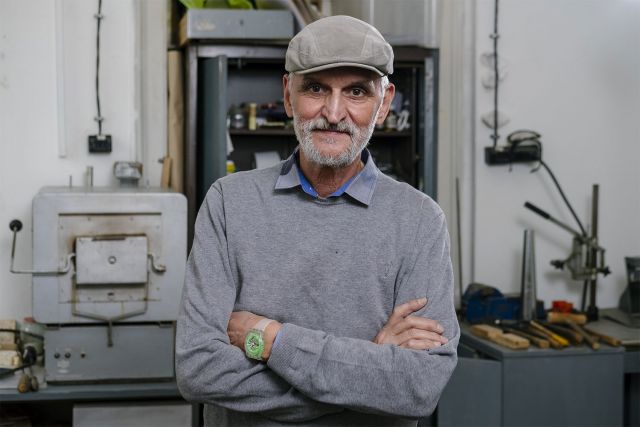The round, soft form of these 18-k yellow gold earrings is crafted by fusing individual pieces of wax wire together, pretty much as a plant grows. Exactly as in nature, there are no two identical pieces. The wax model is then cast and finished. Zwetelina Alexieva was charmed by the tiny blue flowers, hand cut from topaz, and chose them to accent the organic appearance of the earrings.
Height 0.8 cm
Diameter 2 cm
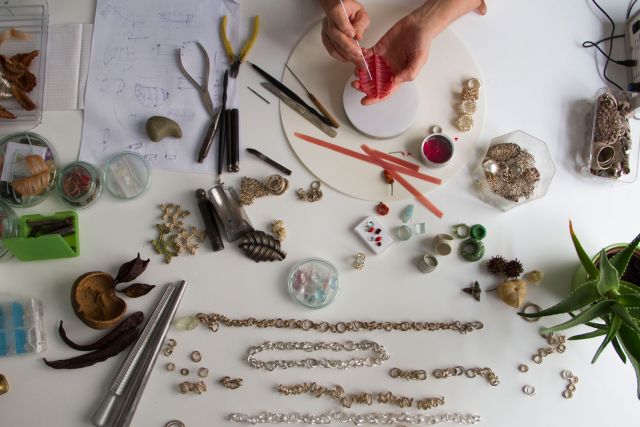
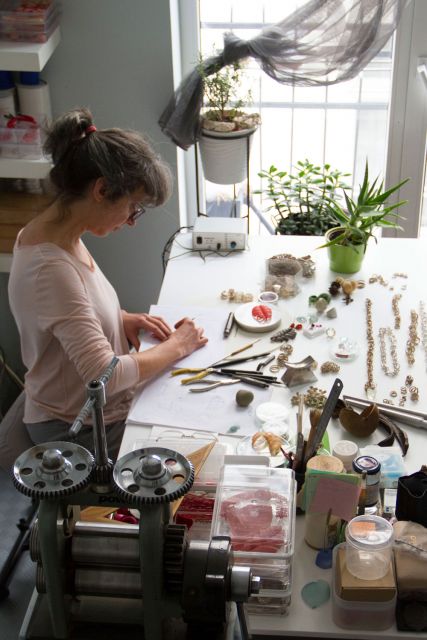
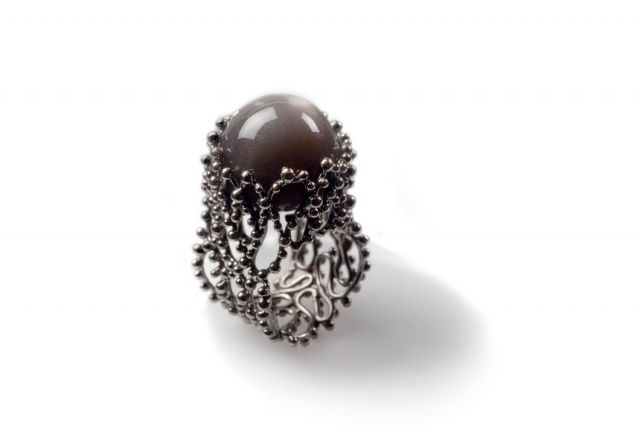
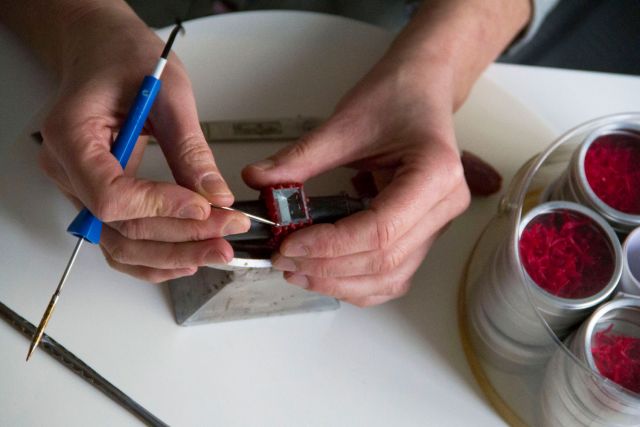
Zwetelina Alexieva
- Jewellery maker
- Sofia, Bulgaria
- Master Artisan
- Recommended by L’ÉCOLE, School of Jewelry Arts
By appointment only
+359 888809240
Let the others shine
- • Zwetelina enjoys making jewellery more than wearing it
- • Her aesthetics and attitudes towards her craft come from China and Japan
- • She likes change and diversity, which is why she switches between occupations and activities
The affinity for handcraft runs in Zwetelina Alexieva’s family, and although there was no tradition of professional artisans, she used to draw, sculpt and do handicraft work from an early age. “I dreamt of studying art, but I lacked the complete freedom and the self-consciousness an artist needs,” she says. Besides, she explains that she wanted the objects she creates to have a purpose. In her opinion the applied arts had the right combination of beauty and usefulness, and jewellery in particular combined the three-dimensional work on an object with a delicate size and durable material. Jewellery is her first love, but she has always had a parallel occupation. Her current one, which she also loves, is her work as a conference interpreter.
Read the full interviewWorks
Photo: ©Angel Penchev

Photo: ©Angel Penchev
Four sterling silver tubes with irregular endings, gold-plated on the inside, hang on a thin, long silver chain. The tubes are initially formed from extruded wax strips and then cast with Sterling silver. The tubes are not fixed or interconnected. They move freely and rearrange constantly, following the movements of the wearer.
Length 80 cm
Width 5 cm
Height 5 cm

Photo: ©Angel Penchev
Opulent in size, but light in weight, this ring is made from meandering sterling silver wires over a hollow form. The wire windings are connected by silver balls, which add depth and texture. The top side is 24mm wide and 15mm high and is smoothly tapered to 7x5mm at the bottom side. The ring is initially formed in wax and then cast using the lost-wax technique.
Width 2.4 cm
Diameter 3.6 cm

Photo: ©Angel Penchev
This sterling silver ring is made of an 18mm wide extruded wax strip. It is wrapped into a loop, cast and finished, preserving the fine, striped structure of the surface. It is inspired by the Japanese “mitsuro” technique, using a specific wax mixture.
Width 3 cm
Diameter 3 cm

Photo: ©Angel Penchev
The form of this sculptural sterling silver ring is derived from a sphere, with an opening for the finger in the lower half. A mesh structure builds the 20mm high dome and gets narrow and flat to 7x4mm on the downside of the ring. A second layer of leave-shaped parts on the mesh gives the plant-like appearance. The ring is built and assembled in wax, then cast in one piece and finished by hand.
Length 3.8
Width 3.8 cm
Height 3.8 cm





